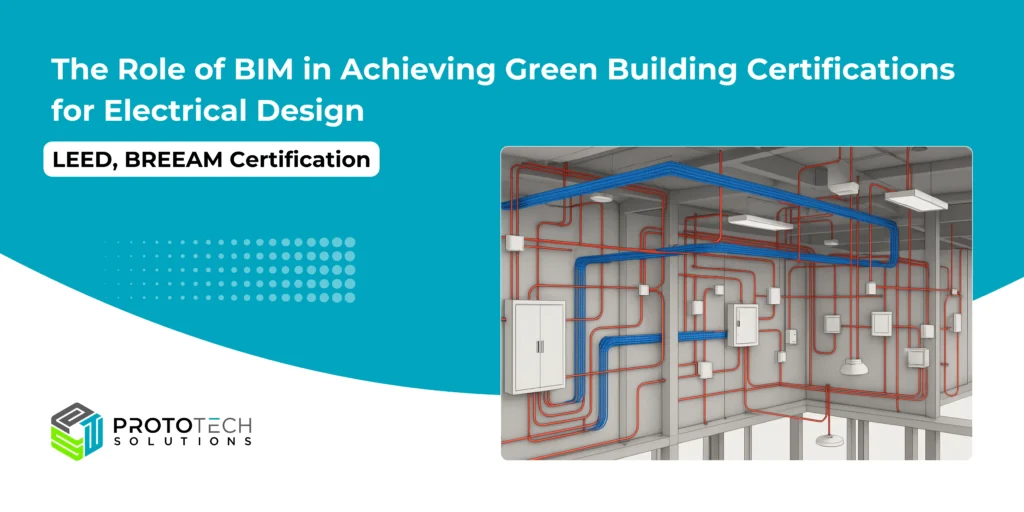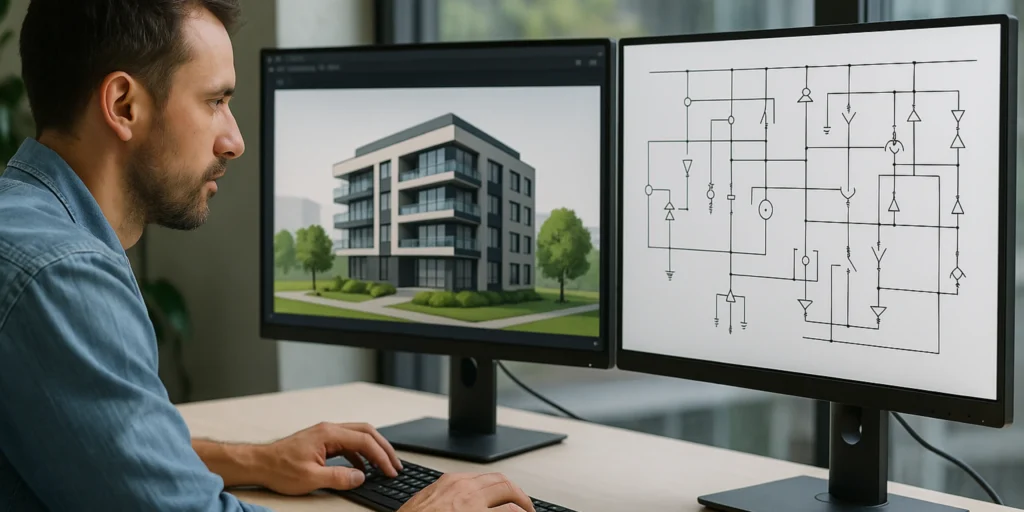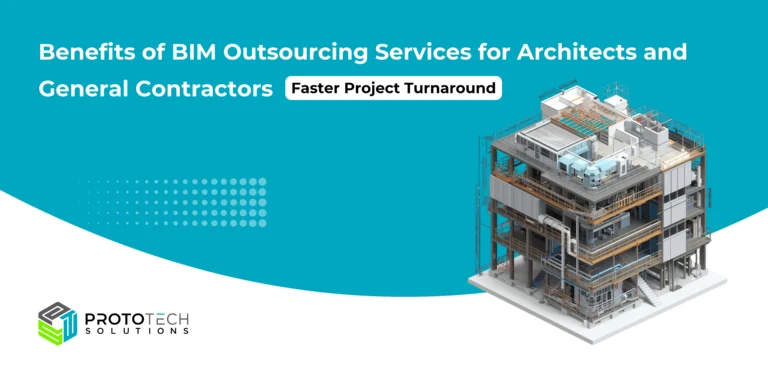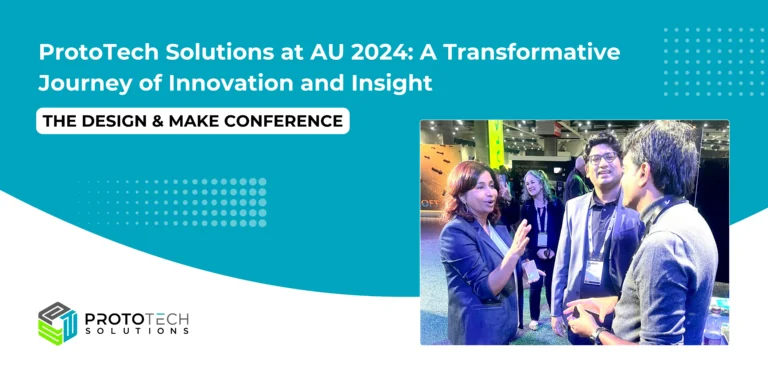The Role of BIM in Achieving Green Building Certifications for Electrical Design

The world of building design and construction is undergoing rapid change, and at the heart of this transformation is Building Information Modeling (BIM). If you’re an electrical designer or engineer, you’ve probably heard BIM mentioned in the same breath as sustainability and green building certifications. But what does BIM bring to the table for electrical design, and how does it help projects achieve the coveted green certifications, such as LEED or BREEAM?
Let’s break down how BIM is helping electrical designers contribute to more energy-efficient, sustainable buildings and how it supports the entire certification process.
What Is Building Information Modeling (BIM)?
Building Information Modeling (BIM) is a digital process used in the architecture, engineering, and construction (AEC) industry to design, construct, and manage buildings and infrastructure. BIM involves creating and managing a digital 3D model of a building that encompasses not only its physical and functional characteristics but also detailed information about materials, systems, costs, timelines, and maintenance.
Key Features of BIM:
- 3D Modeling: Visual representation of the structure with geometry, spatial relationships, and geographic information.
- Data Integration: Embeds details like material specifications, cost estimates, and construction schedules (4D for time, 5D for cost).
- Collaboration: Enables multiple stakeholders (architects, engineers, contractors, etc.) to work on the same model in real-time.
- Lifecycle Management: Supports a building’s entire lifecycle, from design and construction to operation and maintenance.
For those new to the term, BIM is more than just 3D modeling software. It’s a collaborative process that allows architects, engineers, and contractors to work off a shared digital model of a building. This model includes not just the geometry but also detailed data about each component, from light fixtures to circuiting systems.
In electrical design, this means everything from lighting and power distribution to cable routing, panel schedules, and energy simulations can be planned, analyzed, and optimized before a single wire is pulled on site.
What Are Green Building Certifications, and Why Do They Matter?
Green building certifications such as LEED, BREEAM, WELL, and Green Star are frameworks that evaluate a building’s environmental performance. They look at everything from energy efficiency and water usage to material selection and indoor environmental quality. Achieving these certifications isn’t just about bragging rights; it means a building is designed and operated in a way that’s healthier for occupants and kinder to the planet. For example:
- LEED (Leadership in Energy and Environmental Design) focuses heavily on energy efficiency and environmental impact.
- BREEAM looks at categories like energy, health and wellbeing, pollution, and materials.
- WELL Building Standard emphasizes human health and comfort, where lighting and power quality are critical.
Achieving these certifications means documenting compliance with a range of technical criteria, and that’s where BIM shines.
How BIM Supports Green Building Certification in Electrical Design

Here are some key ways BIM helps electrical engineers and designers contribute to green certifications:
1. Lighting Design and Daylighting Analysis
Lighting is a major factor in energy consumption and occupant well-being. BIM tools allow designers to simulate daylighting and determine how much artificial lighting is actually needed. Using BIM-integrated lighting analysis tools (like Revit with plugins such as ElumTools or Autodesk Insight), you can optimize fixture placement, reduce energy usage, and select high-efficiency luminaires.
This not only supports energy-saving goals but also earns credits under LEED and BREEAM for lighting quality and efficiency.
2. Energy Modeling and Load Calculations
With BIM, electrical loads can be accurately estimated based on real component data. BIM platforms can be integrated with energy modeling tools like IES VE or Green Building Studio to assess how different design choices impact total energy consumption.
That allows you to identify more efficient equipment, right-size electrical systems, and reduce unnecessary power draw, all of which contribute to a lower carbon footprint and better performance on certification benchmarks.
3. Efficient Power Distribution Planning
BIM makes it easier to visualize and plan how power is distributed throughout a building. Efficient power layout reduces material waste (like excessive conduit runs or oversized panels) and supports better operational performance.
Smart planning also helps reduce transmission losses and makes integration with renewable sources (like solar panels) smoother. This is another big win for green points under most certification programs.
4. Lifecycle and Maintenance Planning
BIM’s data-rich models can include manufacturer specs, warranty info, and performance data. This means electrical systems can be evaluated not just for installation cost, but for long-term energy use and maintenance.
Certifications like LEED give credit for durability and performance tracking, BIM makes this easy by giving facility managers a digital twin of the electrical system for future monitoring and upgrades.
5. Coordination and Clash Detection
No one likes surprises in the field, especially when it involves ripping out expensive sustainable equipment to fix a misrouted cable. BIM’s ability to detect clashes between electrical systems and other disciplines (like plumbing or HVAC) reduces rework, material waste, and costly delays.
Efficient BIM coordination also ensures that design intent is preserved, which is vital when trying to achieve very specific sustainability targets.
6. Documentation and Reporting
Let’s be honest: documentation for green certification can be overwhelming. But BIM automates much of the reporting process. It allows you to export accurate schedules, product data, and energy usage reports, all of which are required for certification submittals.
This reduces the risk of errors, speeds up the approval process, and ensures that the design team has clear proof of compliance with green standards.
Why Electrical Designers Should Embrace BIM for Sustainability
If you’re an electrical designer aiming for green building certification, BIM isn’t just a nice-to-have; it’s essential. It empowers you to:
- Make smarter, data-driven decisions about energy use and resource allocation.
- Integrate cutting-edge technologies like renewables and smart controls.
- Collaborate more effectively with other disciplines.
- Provide clear, comprehensive documentation for certification.
And as green certifications become more important for clients, investors, and regulators, BIM skills are increasingly in demand.
In Summary
BIM is revolutionizing electrical design by making it easier to achieve green building certifications. From energy simulations and resource optimization to renewable integration and streamlined reporting, BIM is the backbone of sustainable, certification-ready electrical systems. If you’re not already harnessing BIM for your projects, now’s the time to start; both the planet and your career will thank you.
Got a green building project on the horizon? Consider how your electrical design process and your BIM workflow can go hand-in-hand to help you hit those sustainability targets.
Looking for BIM experts? Connect with ProtoTech Solutions as your trusted advisor for your projects. With 20+ years of experience and over 250 projects delivered across the globe, we are professionals who provide complete BIM modeling services that meet international and industry standards.
Our expertise ensures your buildings are not only smarter but also greener. Contact us today and see how we can help you achieve your sustainability goals!






